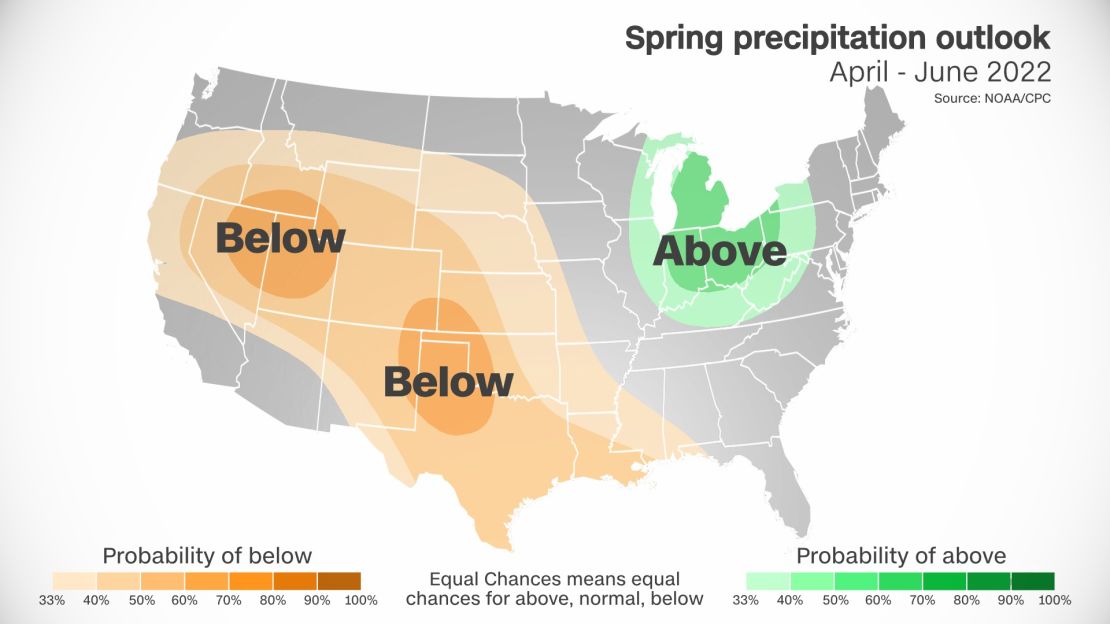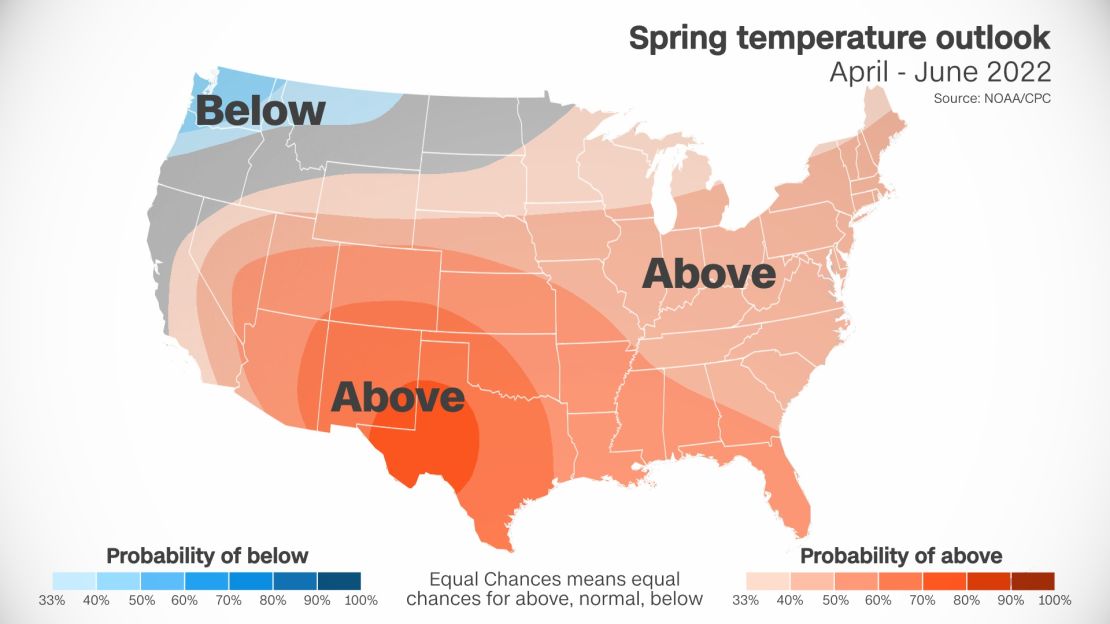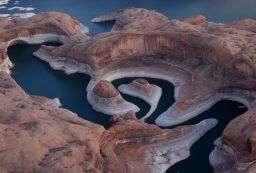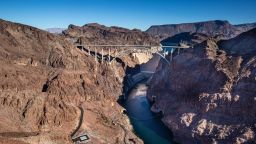The West’s intense multi-year drought is expected to at least continue — if not worsen — in the coming months, the National Oceanic and Atmospheric Administration announced Thursday in its spring outlook.
For the second year in a row, NOAA forecasters are predicting “prolonged, persistent drought in the West where below-average precipitation is most likely,” the agency wrote.
Nearly 60% of the Lower 48 was experiencing moderate to exceptional dry conditions this week, the largest area in a decade. In California, which did not get enough much-needed precipitation this winter, extreme drought expanded from 12% of the state to 35% in the past week, according to Thursday’s Drought Monitor report.
And there’s little to no relief in sight.
Given the combined forecast of low precipitation and high temperatures, “it’s very likely, or makes sense, that areas will certainly some of the drought areas will become worse,” Jon Gottschalck, a chief at NOAA’s Climate Prediction Center, said at a news conference.


“[The forecasts] are not favorable” for the drought, Justin Mankin, assistant professor of geography at Dartmouth College and co-lead of NOAA’s Drought Task Force, told CNN. “I think you’re going to see a rapid re-establishment of conditions analogous to last fall quite quickly across a number of states.”
A recent study found the period from 2000 to 2021 was the driest in 1,200 years for the West. Last year’s drought severity was “exceptional,” those researchers said.
Water availability is a high concern in the West, where the need for precipitation is dire.

Years of low rainfall and more intense heat waves have fed directly to multi-year, unrelenting drought conditions and water shortages. These water concerns are likely to persist this year given NOAA’s spring outlook, which calls for below-average precipitation in the West and Southern Plains.
The intense drought has pushed reservoirs in the West to alarmingly low water depths.
“In general, these water shortages are stressing systems. They’re stressing communities,” Ed Clark, the director of NOAA’s National Water Center, told reporters. “In particular, the Colorado River Basin, we are seeing the Bureau of Reclamation begin their calls for for additional actions that will provide or curtail some water allocations.”
On the Colorado River, Lake Powell plunged below a critical threshold this week — 3,525 feet above sea level — sparking additional concerns about water supply and a critical source of hydropower generation that millions of people in the Western states rely on for electricity.
According to the US Bureau of Reclamation’s drought contingency plans, the 3,525-foot mark is a significant “target elevation” for Lake Powell, under which the situation becomes dire. The 3,525-foot target is crucial because it allows a 35-foot buffer for emergency response to prevent Lake Powell from dropping below the minimum pool elevation of 3,490 feet above sea level, the lowest at which Glen Canyon Dam is able to generate hydropower for millions of people.
Lake Mead, the largest reservoir in the US, also dipped below a critical level last fall which triggered unprecedented water cuts for states in the Southwest.
“This year the Colorado River Basin has experienced extremely variable conditions with a record high snowpack one month, followed by weeks without snow,” Reclamation Acting Commissioner David Palumbo said in a statement last week, in anticipation of the reservoir dropping. “This variable hydrology and a warmer, drier west have drastically impacted our operations and we are faced with the urgent need to manage in the moment.”
Brad Pugh, the operational drought lead for NOAA’s Climate Prediction Center, also said drought in the West will exacerbate wildfire risk.
“As we go into the summer months, [the drought] will set the stage for elevated risk of wildfire activity,” Pugh told reporters. “So as far as preparations go, I just urge the public to stay abreast, stay aware of the public forecasts from the National Weather Service offices as we get closer to the summer wildfire season there in California.”
Beyond the West, drought conditions in the South, particularly Texas, have worsened in recent months, with over 90% of the state now in drought, according to the latest US Drought Monitor.
NOAA’s report suggests this trend will continue through the spring.
“So while the spring outlook for this year from NOAA look quite similar to last year, there is a key difference about this spring, which is that the drought has expanded eastward, pushing 70% of Texas -— which was less impacted over the last two years — into severe drought,” Mankin said.
Texas’s drought is in part fueling an extreme fire threat on Thursday, according to the Storm Prediction Center, creating what officials say is “a highly volatile fire environment.”
Scientists say the recent drought is just a preview of what’s to come, not just for the US but for the rest of the world.
Globally, UN scientists found droughts that may have occurred only once every 10 years or so now happen 70% more frequently due to climate change. Unless the world cuts its reliance on fossil fuels and stabilizes the planet’s temperature rise, reservoirs will continue to drain and and wildfires will become more dangerous.
This story has been updated with additional information.
CNN Meteorologist Monica Garrett contributed to this report.





